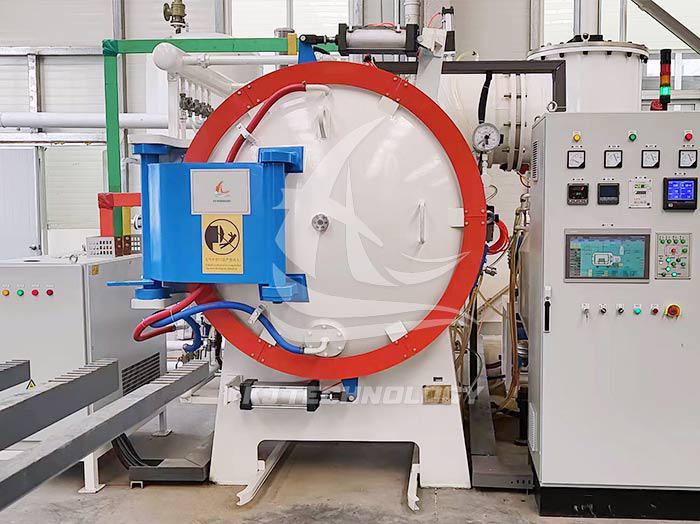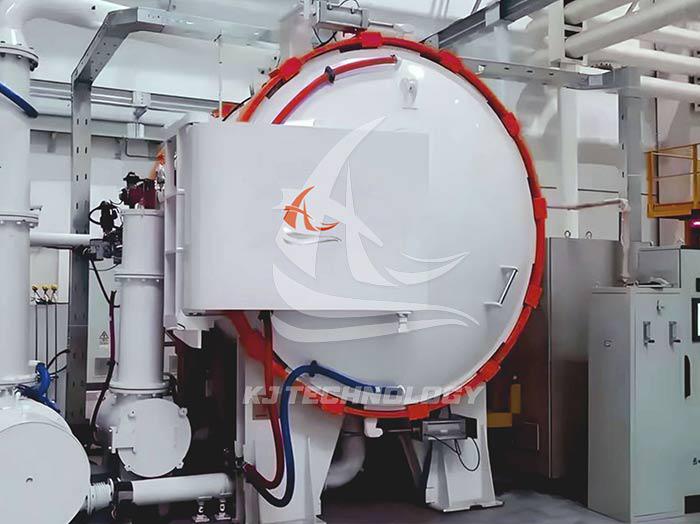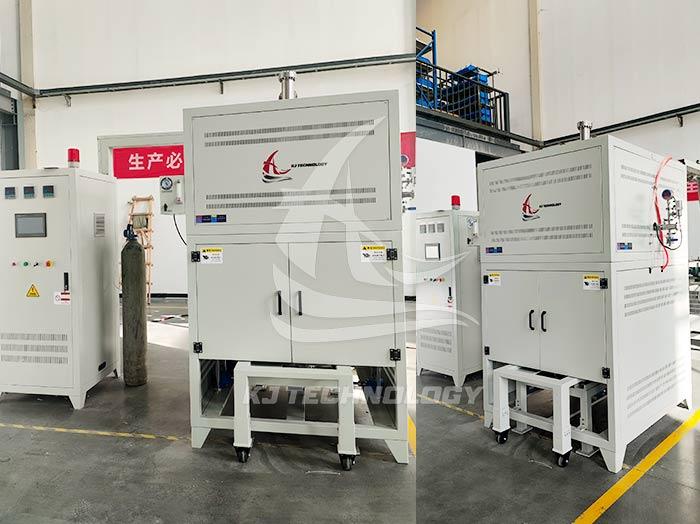What materials can be brazed in a high vacuum and high temperature brazing electric furnace?
 08-26-2025 Author: KJ technology
08-26-2025 Author: KJ technology
The high vacuum high-temperature brazing electric furnace, with its ultra-high vacuum environment, precise temperature control, and efficient heating and cooling system, can brazing various metals and composite materials, especially suitable for scenarios that are prone to oxidation, high activity, or require extremely high welding quality. The following is a detailed classification and typical applications of its brazing materials:
1. Metal materials
aluminum alloy
Characteristics: Aluminum alloys are prone to react with oxygen at high temperatures to produce aluminum oxide, leading to embrittlement of welded joints. High vacuum environment can effectively suppress oxidation and improve welding strength.
Applications: Aerospace structural components (such as aircraft skins, fuel tanks), automotive radiators, electronic radiators, etc.
titanium alloy
Characteristics: Titanium reacts violently with oxygen, nitrogen, and hydrogen at high temperatures, forming brittle compounds. Vacuum brazing can avoid contamination and obtain high-strength, corrosion-resistant joints.
Applications: aviation engine blades, compressor discs, orthopedic implants (such as artificial joints), ship propellers, etc.
Nickel base superalloy
Characteristics: Nickel based alloys (such as Inconel, Hastelloy) contain elements such as chromium and aluminum, and are prone to oxidation at high temperatures. Vacuum brazing can maintain material properties and achieve defect free connections.
Applications: Gas turbine blades, nuclear reactor heat exchangers, corrosion-resistant components of chemical equipment, etc.
stainless steel
Characteristics: Brazing stainless steel under vacuum can avoid the formation of oxide scale, reduce subsequent processing steps, and improve the corrosion resistance of the joint.
Applications: food processing equipment, medical devices (such as surgical instruments), building decorations, etc.
Copper and copper alloys
Characteristics: Copper is prone to volatilization at high temperatures, and a vacuum environment can reduce the volatilization rate while avoiding oxidation.
Applications: power electronic radiators, vacuum electronic devices (such as traveling wave tubes), refrigeration equipment condensers, etc.
Refractory metals (molybdenum, tungsten, tantalum, etc.)
Characteristics: Refractory metals have a high melting point (tungsten has a melting point of 3410 ℃), and are prone to react with oxygen and nitrogen at high temperatures. Vacuum brazing is the only feasible connection method.
Applications: High temperature furnace heating elements, rocket nozzles, nuclear fuel cladding, etc.
2. Composite materials
Ceramic metal composite materials
Characteristics: There is a significant difference in thermal expansion coefficients between ceramics and metals, and vacuum brazing can achieve reliable connections by selecting active brazing materials such as Ag Cu Ti.
Applications: Electronic packaging (such as connecting ceramic substrates with metal frames), aerospace thermal protection systems, sensor components, etc.
Metal metal composite materials
Characteristics: Direct welding of dissimilar metals (such as aluminum steel, copper stainless steel) can easily produce brittle intermetallic compounds. Vacuum brazing alleviates thermal stress through an intermediate layer of brazing material.
Application: Lightweight structural components for automobiles (such as aluminum steel hybrid bodies), battery module connectors, etc.
Metal based composite materials (MMCs)
Features: For aluminum based silicon carbide (Al/SiC) reinforced composite materials, vacuum brazing can avoid the reaction between the reinforcing phase and the matrix interface, and maintain material properties.
Applications: aerospace structural components, high-performance brake discs, etc.
3. Special materials
Heat resistant alloys with high aluminum and titanium content
Features: For single crystal alloy blades (containing 5%~10% aluminum and 3%~5% titanium), vacuum brazing can avoid embrittlement caused by element segregation.
Application: Repair of aircraft engine turbine blades, manufacturing of high-temperature components for gas turbines, etc.
Active metals (such as beryllium, zirconium)
Characteristics: Beryllium and zirconium are prone to form dense oxide films in air, which hinder the wetting of brazing materials. Vacuum environment can remove oxide film and achieve good connection.
Applications: nuclear industry components (such as beryllium reflector layers), aerospace optical devices, etc.
Precious metals (such as gold, platinum, palladium)
Characteristics: Precious metals are prone to volatilization at high temperatures, and vacuum brazing can control the atmosphere composition and reduce volatilization losses.
Applications: jewelry, precision electronic components (such as capacitor electrodes), chemical catalytic devices, etc.
4. Material selection and key process points
Solder matching
Aluminum alloy: commonly used Al Si based brazing materials (such as BAg-45CuZn) have a low melting point (450~500 ℃) and good fluidity.
Titanium alloy: Ti Zr Cu Ni active brazing material is selected, which can wet the ceramic surface.
Nickel based alloys: using BNi-2 (Ni-Cr-Si-B) or BNi-7 (Ni-Cr-P) brazing materials, with excellent high temperature resistance.
Ceramic metal: Ti in active brazing materials (such as Ag Cu Ti) can react with ceramics to form compounds, achieving chemical bonding.
surface treatment
Before welding, the surface of the workpiece needs to be cleaned (such as acid washing, sandblasting) to remove oil stains and oxide films, and improve the wettability of the brazing material.
Ceramic surfaces can be coated with a metallization layer (such as Mo Mn method) to enhance the bonding strength with brazing materials.
Process parameter control
Vacuum degree: generally lower than 10 ⁻ Pa to avoid oxidation;
Temperature: Set according to the melting point of the brazing material, usually 30-50 ℃ higher than the liquidus line of the brazing material;
Insulation time: Ensure that the brazing material fully fills the gap, but avoid overburning of the base material;
Cooling rate: Control the cooling rate to reduce thermal stress, and some materials need to be slowly cooled to room temperature.








